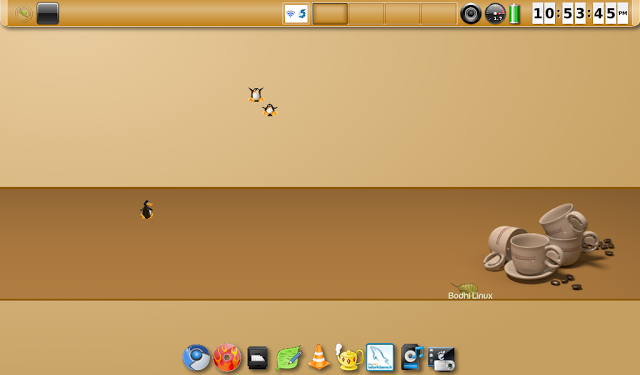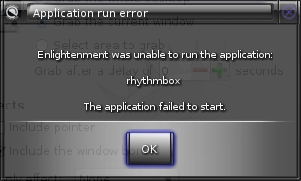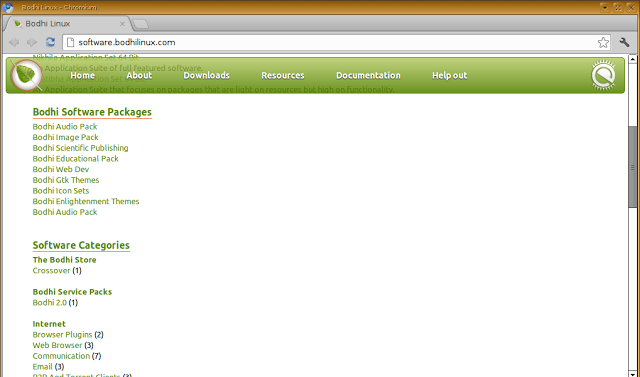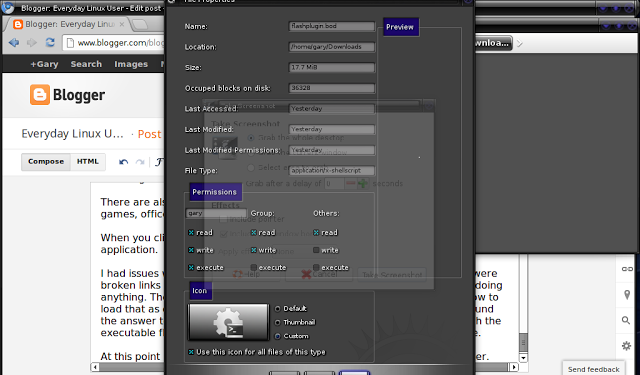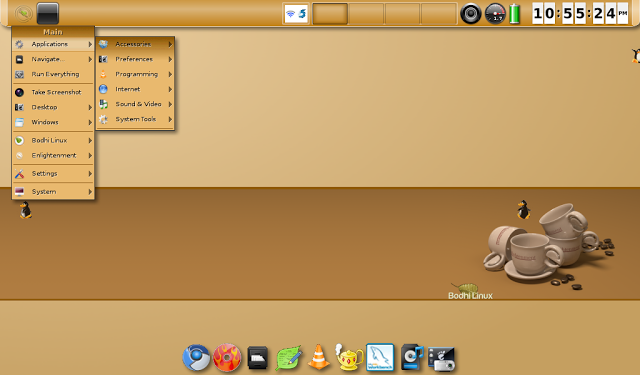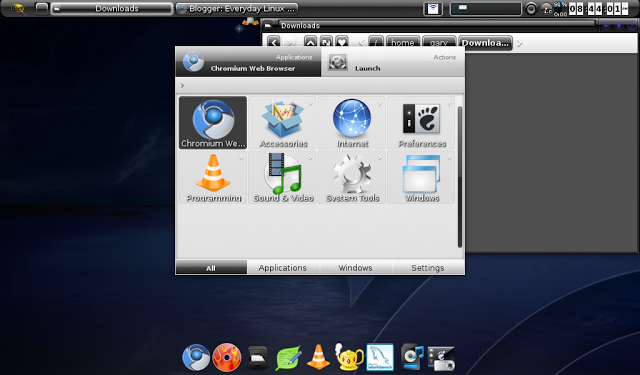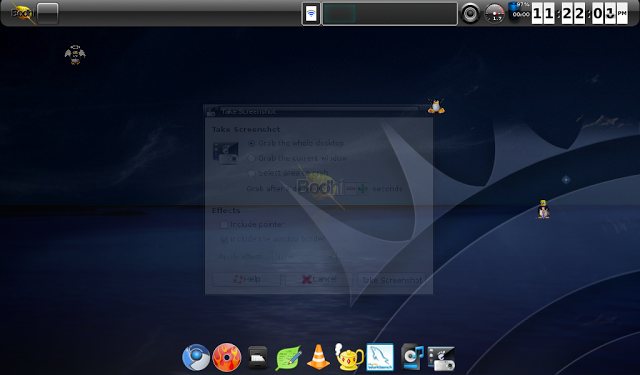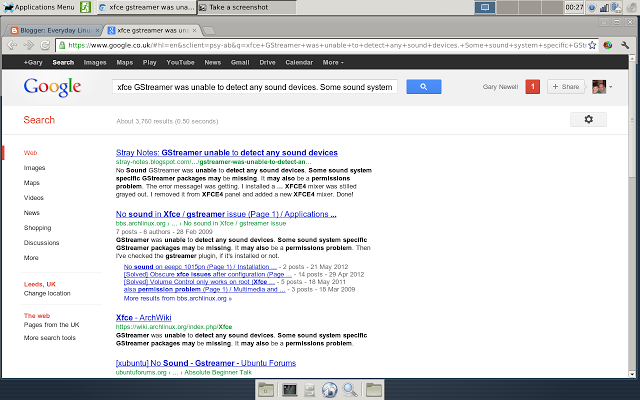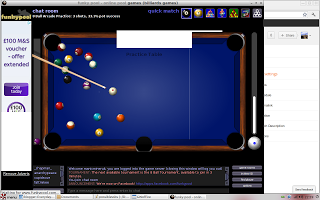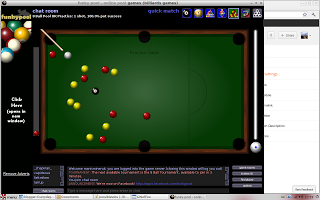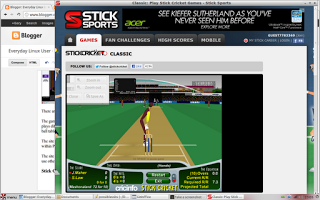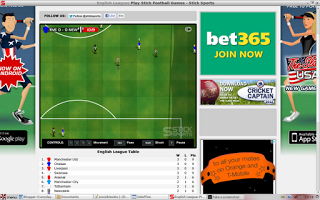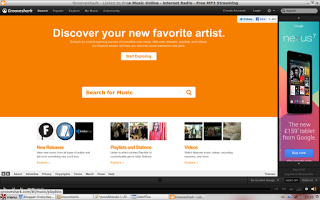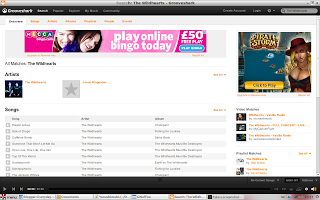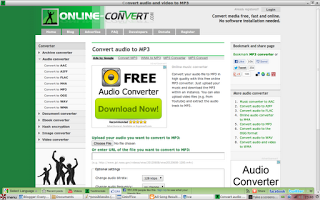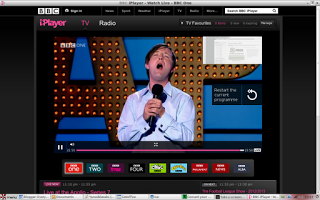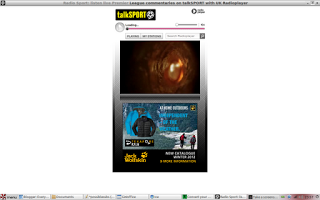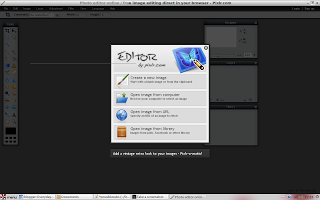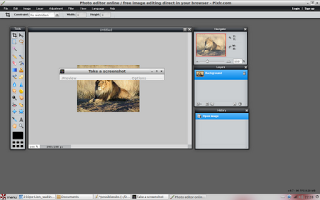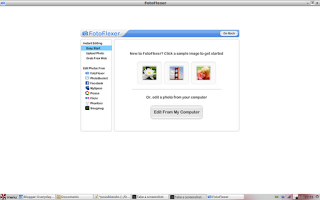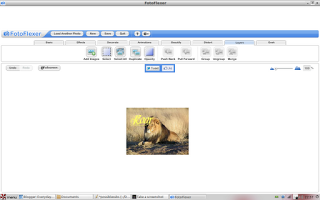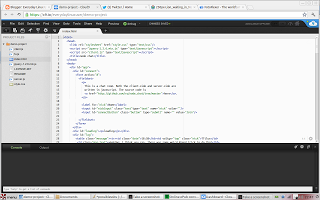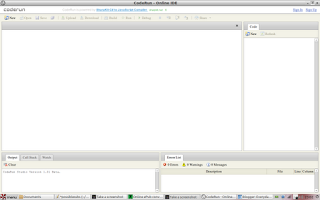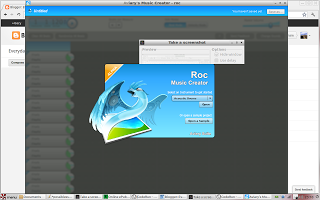Introduction
Last night my son was trying to install something called Tekkit which has something to do with Minecraft.
I am not really savvy when it comes to Minecraft and I had no idea what Tekkit was. My son asked whether he could download and run the Tekkit Launcher and if so could I help him install it.
The first thing I noticed when visiting the site is that there is a download button on the right hand side for both a launcher and a server. What is lacking however is any real information about what Tekkit is, how to install it and how it works.
This got me thinking about the average computer user. How easy is it for someone to become familiar with Linux? Is there enough information to get started?
This article is therefore written for people that have heard the term Linux and wants to know a bit more but doesn’t know where to begin.
1. What is Linux?
Lots of people have chosen to make the move from Windows to Linux but how many other people have given up long before even understanding what Linux is.
You may have seen the term Linux used in the media or on television. You may also have seen Linux highlighted in big bold letters on the magazine shelves. What you may not know is what Linux is or you may have a skewed view believing it to be the plaything of geeks and nerds.
Reading Wikipedia may not help you. The first paragraph alone would be enough to make a lot of people’s brains explode.
Linux ( i/ˈlɪnəks/ LIN-əks[5][6] or /ˈlɪnʊks/ LIN-uuks)[7][8][9] is a Unix-like computer operating system assembled under the model of free and open source software development and distribution. The defining component of Linux is the Linux kernel, an operating system kernel first released 5 October 1991 by Linus Torvalds.[10][11]
I will therefore try and define Linux as simply as I can.
On your computer at the moment you will probably have the Windows operating system. There have been a number of versions of Windows over the years starting at version 1 and going all the way up to Windows 7 (with 8 on its way).
Windows as you may know is an operating system. What is means to you though is that using a series of menus, icons, windows and applications you can do things like browse the internet, watch videos, play games and create documents. Lurking within Windows is something called the Windows Kernel or the Windows NT Kernel. I dare you to search for the Windows NT Kernel on Wikipedia.
The architecture of Windows NT, a line of operating systems produced and sold by Microsoft, is a layered design that consists of two main components, user mode and kernel mode. It is a preemptive, reentrant operating system, which has been designed to work with uniprocessor and symmetrical multi processor (SMP)-based computers. To process input/output (I/O) requests, they use packet-driven I/O, which utilizes I/O request packets (IRPs) and asynchronous I/O. Starting with Windows 2000, Microsoft began making 64-bit versions of Windows available—before this, these operating systems only existed in 32-bit versions.
Without going to deeply into what the Kernel is it is basically the engine for your operating system. From the Windows NT Kernel multiple versions of Windows are formed including the home, professional, ultimate editions. All of these are different versions of the same operating system running off the same Kernel.
There is a common misconception that Linux is an operating system. Linux is the engine that spawns a whole host of different operating systems known as distributions.
2. What is a distribution (distro)?
When browsing the computing magazine section at your local news agent or supermarket you may have seen the Linux magazines. On the front of the magazines there are often free disks attached to the front.
In big bold writing on the front of the magazine it will say “Ubuntu 12.04 reviewed” or “What’s new in Linux Mint 13?”.
Linux Format magazine is currently giving away 2 disks with 15 distributions on it. People new to the Linux world may not have a clue what a distribution even is.
The distribution is the actual operating system. So you could look at it like this. There are various Windows distributions including Windows Home Starter, Windows Home Premium, Windows Professional and Windows Server. Each distribution of Windows has a different target audience.
Linux is the same. There are multiple distributions each aimed at a different target audience. The difference between Linux and Windows is that there are hundreds if not thousands of choices of Linux distributions.
The other big difference between Windows and Linux is that the majority of Linux distributions are free.
3. How do I know which distribution is right for me?
There is no easy answer to know which Linux distribution is right for you. It basically comes down to personal preference.
The best way to find out is to dive right in and try a few of them out. The great thing is that a lot of distributions provide live CDs which makes it possible to insert the CD into you CD drive and restart your computer and it will boot straight into the Linux distribution. You do not have to worry about messing up your Windows installation. Simply try out all the functions the Live CD has to offer and if you like it you can then install it. If you don’t like it take the CD out and restart your PC and boot back into Windows.
Now blindly downloading distributions is a bit of a scattergun approach to finding out whether Linux is right for you. If you are completely new to Linux then you probably would not want to face the daunting task of installing Slackware.
Fortunately help is at hand. Visit
www.distrowatch.org. This site is an invaluable resource.
First of all there is a list down the right hand side showing the top 100 distributions. There is also a fantastic search facility. You can use the search tool to search on the distribution type. For example if you are new to Linux you might want your first foray into the world of Linux to be with the easier to use distributions. The plus side of these distributions is that most things work straight away and the menus are easy to navigate.
If you have an older computer then it makes sense to run a distribution that is kind to resources. In this instance searching on “older computers” provides a list of distributions that run well on older computers.
If you are heavily into gaming there are distributions for gamers. If you want a distribution for educating your children you can search on education.
Even after running a search you may still find that there is a list of about 20 distributions to choose from so how do you then know which one to try first. Each distribution listing on distrowatch has a description which states the major goals of the projects. You can also see screenshots and read reviews.
Each Linux distribution will come with different desktop environments and choice of installed software. Ultimately as you become more accustomed to using Linux you will know which desktop environment suits you best and which applications you prefer to use.
For people wishing to use Linux for the first time I personally would recommend Ubuntu, Linux Mint or Zorin OS.
4. What is a desktop environment?
In graphical computing, a desktop environment (DE) commonly refers to a particular implementation of graphical user interface (GUI) derived from the desktop metaphor that is seen on most modern personal computers.[1] These GUIs help the user in easily accessing, configuring, and modifying many important and frequently accessed specific operating system (OS) features. The GUI usually does not afford access to all the many features found in an OS. Instead, the traditional command-line interface (CLI) is still used when full control over the OS is required in such cases.
Wow! That paragraph was taken straight from Wikipedia.
Think of the desktop environment as the series of menus, taskbars, windows and keyboard shortcuts that you use to start and run applications.
If you look at Windows 7 the desktop environment consists of a taskbar at the bottom. The taskbar is split between the Start icon, quick launch icons, opens applications (tasks) and the system tray which includes the clock. When you click the start button a menu appears and you can search for programs or you can use the menus to navigate for the programs you wish to run.
In addition to the menus and taskbars there is the desktop itself which has icons, a background, context menus that can be pulled up by pressing the right mouse button and of course you can add widgets to display things like the weather.
The one thing you will quickly learn about Linux is that there are lots of choices for everything and there is an abundant choice of desktop environments. The main desktop environments in use are Unity, Cinnamon, Mate, Gnome, KDE, XFCE and LXDE. If I started a debate as to which is the best one then I would have pages upon pages of comments declaring allegiances to one or another. At the end of the day it is down to choice. Really the only way to decide is to try a few out and best way to try a few out is to try different distributions that implement different desktop environments.
5. Where can I get Linux distributions?
First of all you can get most distributions for free. Visit distrowatch.org and search for the distribution you are interested in and click the download link.
Some distributions make it more complicated than others when choosing what to download. For example visiting the Linux Mint site you will see a table showing all the possible downloads and what they consist of. This is fairly simple. Ubuntu is even easier because there is only one desktop choice (Unity) and so you simply get the choice to download a 32 bit version or a 64 bit version.
Other distributions make it a little bit more complicated. PCLinuxOS for instance has a load of text with some small links at the bottom of the page. They should put the links at the top and the text underneath. They are not the worst though. For some distributions you will get to a folder with 20 or 30 links showing different versions some with source code, some with documentation and it will say x86, x64, i386 etc and it just isn’t clear which version it is you should download.
Of course if you have read this entire article thus far you will also realise that you can buy Linux magazines which often have a variety of different distributions on the cover disk to the magazine. Along with the cover disk there will be a review of the distribution in the magazine so you can make an informed decision as to which one is best for you.
Now whilst Linux is free you might not want the hassle of downloading the ISO image to burn to CD/DVD and you might not want to spend £5.99 on a magazine just for one disk that you may or may not like.
In this instance you can visit a site like where you can choose the version of Linux you would like to try and it will be sent to you on a CD or DVD for just a small fee.
6. How do I install Linux but keep Windows?
Most people when they first look at using Linux aren’t ready to give up Windows.
Firstly I would recommend trying out the live CD first.
Some Linux distributions can run from inside Windows or as well as Windows without affecting the Windows install at all.
Ubuntu has the Wubi installer which runs Ubuntu from inside Windows. Now you can try all the features of Ubuntu and use it in its entirety without worrying about losing your Windows data.
Puppy Linux on the other hand runs from a CD or USB drive and the save file is stored as a file on your Windows drive. It is basically a file like any other file and so again does not affect your Windows operating system.
Other distributions whilst not running from within Windows enable you to install the Linux distribution alongside Windows so that when you boot your PC you can choose whether to use Windows or whether to use the Linux distribution. All the major Linux distributions make this part of the installation process. It really is a case of checking boxes.
If you have ever installed Windows by yourself then in the majority of cases you will be able to install Linux. Most distributions have a graphical installer which provide a series of questions to answer such as where you are located, which users you want to create and which applications to install.
7. Can I still run my Windows applications?
There are two answers to this question. The simple answer is yes you can. The real answer though asks another question why?
If you want to run Windows software there are multiple ways to do it. One way is to install a program called WINE. This software enables you to install Windows applications within the Linux operating system and run them straight from within Linux. Now this software is very good and works incredibly well but there are some Windows programs that just won’t run properly using WINE. The other option is to install VirtualBox. This enables you to install a copy of Windows within a virtual machine whereby you can install the Windows applications you wish to use.
As mentioned previously Linux gives you choice and an incredible amount of it. To this end there are thousands upon thousands of applications that can be installed and in the majority of cases you will find an application that does exactly the same as the Windows application you currently use.
As an example of this if you want to read your emails in an Outlook style application there is an email client called Thunderbird. (http://www.mozilla.org/en-GB/thunderbird/). If you are not sure it meets your needs then there is a Windows version that you can try first.
For office tasks such as word processing, spreadsheets and presentations there is LibreOffice. Again you can download a Windows version of this software from www.libreoffice.org/download
For watching videos there is VLC player (again there is a Windows version). For music Rhythmbox or Banshee can be used. They are both similar to Windows Media Player.
8. Is my hardware supported by Linux?
Yet another common misconception in Windows land and by the media is that Linux doesn’t support hardware very well.
Whilst this used to be true support for hardware has come on leaps and bounds over the past 5 years and I haven’t got one device that doesn’t work fully under Linux.
For instance I have a Sony Walkman and Rhythmbox and Banshee both pick up the Walkman as a device and make it easy to synchronise my laptop with the Walkman.
My printer and scanner both work very well and I have a blaze ultimate portable game console which I can connect with Linux to copy games to and from the device. You can even use an XBOX controller as a joypad for playing games.
The best thing to do is to try the live version of a distribution out first and test all your hardware.
9. How do I get support for Linux?
This is a very important topic. Everyone knows a guy that can help them when their Windows goes wrong. Not many people would know a Linux guy that can help if Linux doesn’t work.
Again there are two main points to make here. When Windows goes wrong it usually goes spectacularly wrong.
The most common reasons for Windows to go wrong are:
- Viruses/Malware
- Forgotten Windows passwords on a single user machine
- Corrupt registry
- Cannot connect to the internet
Yes I get asked questions about other things that happen on Windows but 99% of the people that ask me for help are for these four things.
Linux nearly never goes wrong for me. Most of the time I need Linux support for things that I want to try out but just don’t know how to.
Help is not far away. The major distributions have forums that you can go to for help. Most of the people are friendly and will do their utmost to help. If the forums don’t work then there are the ICQ chat rooms. Now the Ubuntu guys bend over backwards to help people. I sat with a window open to the ICQ chat room and watched as a Ubuntu expert dedicated 3 hours of his life sorting out a troublesome router problem for a new user.
If you cannot get help in the forums then there is of course Google. My view of Google is that if you cannot find the answer to a problem then you probably just haven’t used the right search term yet.
The best site for help however has to be Youtube. Often seen as a place for watching jackass type videos or kids playing pranks this is the one platform that has helped me the most in the past few years. People dedicate a large amount of time recording video tutorials showing you how to achieve what it is you want to achieve. It was Youtube that helped me solve my son’s Tekkit problem. Currently Youtube is the most educational tool on the internet.
10. Why would I want to use Linux instead of Windows?
You know the answer to this question might be that you wouldn’t You might be perfectly happy working away in Windows land and if that is how you choose to use your computer then that is fine.
You might consider leaving Windows for the following reasons however:
- You need a new computer and you don’t like the look and feel of Windows 8
- You are using Windows 7 but keep getting viruses
- Your machine is running very slowly running Windows
- You are fed up with constant updates for not just Windows but Antivirus software, firewalls, java, adobe products etc
- Your machine is getting older and can’t upgrade from XP to Vista/7 or 8.
It may be that when you buy your next PC it comes with Windows 8. (This will depend upon when you read this article, at the moment it hasn’t been released). You might not like Windows 8 at all. If you have an XBOX or a Windows phone then the interface will probably be familiar to you but it is a personal preference as to whether you like it or not. You might consider at this point trying Linux to see if it works better for you.
If you keep getting viruses then I would consider a number of things. Firstly update your anti-virus software and firewall. Secondly be more cautious when downloading files from the internet and also be careful about which websites you visit. Moving to Linux will give you a level of protection against getting viruses and you will feel more secure. However, of course this does not mean you should throw caution to the wind. There has been the odd isolated incident within Linux regarding viruses.
If your machine is running slowly or it is getting older then you might not be able to upgrade to a later version of Windows. Staying on the current version of Windows is an option but support will be faded out and there is every chance that security holes will be found and not plugged. Moving to a version of Linux that is designed for older computers will give you peace of mind that you are running on an operating system designed for you. It will be actively supported by the developers. You will not be considered a second class citizen running on an old version of an operating system but as a key user for a currently supported and developed operating system.
Finally you might move to Linux because you gave it a go and because like many before realised that Linux is brilliant and not just for geeks after all.
Introduction
Last night my son was trying to install something called Tekkit which has something to do with Minecraft.
I am not really savvy when it comes to Minecraft and I had no idea what Tekkit was. My son asked whether he could download and run the Tekkit Launcher and if so could I help him install it.
The first thing I noticed when visiting the site is that there is a download button on the right hand side for both a launcher and a server. What is lacking however is any real information about what Tekkit is, how to install it and how it works.
This got me thinking about the average computer user. How easy is it for someone to become familiar with Linux? Is there enough information to get started?
This article is therefore written for people that have heard the term Linux and wants to know a bit more but doesn’t know where to begin.
1. What is Linux?
Lots of people have chosen to make the move from Windows to Linux but how many other people have given up long before even understanding what Linux is.
You may have seen the term Linux used in the media or on television. You may also have seen Linux highlighted in big bold letters on the magazine shelves. What you may not know is what Linux is or you may have a skewed view believing it to be the plaything of geeks and nerds.
Reading Wikipedia may not help you. The first paragraph alone would be enough to make a lot of people’s brains explode.
Linux ( i/ˈlɪnəks/ LIN-əks[5][6] or /ˈlɪnʊks/ LIN-uuks)[7][8][9] is a Unix-like computer operating system assembled under the model of free and open source software development and distribution. The defining component of Linux is the Linux kernel, an operating system kernel first released 5 October 1991 by Linus Torvalds.[10][11]
I will therefore try and define Linux as simply as I can.
On your computer at the moment you will probably have the Windows operating system. There have been a number of versions of Windows over the years starting at version 1 and going all the way up to Windows 7 (with 8 on its way).
Windows as you may know is an operating system. What is means to you though is that using a series of menus, icons, windows and applications you can do things like browse the internet, watch videos, play games and create documents. Lurking within Windows is something called the Windows Kernel or the Windows NT Kernel. I dare you to search for the Windows NT Kernel on Wikipedia.
The architecture of Windows NT, a line of operating systems produced and sold by Microsoft, is a layered design that consists of two main components, user mode and kernel mode. It is a preemptive, reentrant operating system, which has been designed to work with uniprocessor and symmetrical multi processor (SMP)-based computers. To process input/output (I/O) requests, they use packet-driven I/O, which utilizes I/O request packets (IRPs) and asynchronous I/O. Starting with Windows 2000, Microsoft began making 64-bit versions of Windows available—before this, these operating systems only existed in 32-bit versions.
Without going to deeply into what the Kernel is it is basically the engine for your operating system. From the Windows NT Kernel multiple versions of Windows are formed including the home, professional, ultimate editions. All of these are different versions of the same operating system running off the same Kernel.
There is a common misconception that Linux is an operating system. Linux is the engine that spawns a whole host of different operating systems known as distributions.
2. What is a distribution (distro)?
When browsing the computing magazine section at your local news agent or supermarket you may have seen the Linux magazines. On the front of the magazines there are often free disks attached to the front.
In big bold writing on the front of the magazine it will say “Ubuntu 12.04 reviewed” or “What’s new in Linux Mint 13?”.
Linux Format magazine is currently giving away 2 disks with 15 distributions on it. People new to the Linux world may not have a clue what a distribution even is.
The distribution is the actual operating system. So you could look at it like this. There are various Windows distributions including Windows Home Starter, Windows Home Premium, Windows Professional and Windows Server. Each distribution of Windows has a different target audience.
Linux is the same. There are multiple distributions each aimed at a different target audience. The difference between Linux and Windows is that there are hundreds if not thousands of choices of Linux distributions.
The other big difference between Windows and Linux is that the majority of Linux distributions are free.
3. How do I know which distribution is right for me?
There is no easy answer to know which Linux distribution is right for you. It basically comes down to personal preference.
The best way to find out is to dive right in and try a few of them out. The great thing is that a lot of distributions provide live CDs which makes it possible to insert the CD into you CD drive and restart your computer and it will boot straight into the Linux distribution. You do not have to worry about messing up your Windows installation. Simply try out all the functions the Live CD has to offer and if you like it you can then install it. If you don’t like it take the CD out and restart your PC and boot back into Windows.
Now blindly downloading distributions is a bit of a scattergun approach to finding out whether Linux is right for you. If you are completely new to Linux then you probably would not want to face the daunting task of installing Slackware.
Fortunately help is at hand. Visit
www.distrowatch.org. This site is an invaluable resource.
First of all there is a list down the right hand side showing the top 100 distributions. There is also a fantastic search facility. You can use the search tool to search on the distribution type. For example if you are new to Linux you might want your first foray into the world of Linux to be with the easier to use distributions. The plus side of these distributions is that most things work straight away and the menus are easy to navigate.
If you have an older computer then it makes sense to run a distribution that is kind to resources. In this instance searching on “older computers” provides a list of distributions that run well on older computers.
If you are heavily into gaming there are distributions for gamers. If you want a distribution for educating your children you can search on education.
Even after running a search you may still find that there is a list of about 20 distributions to choose from so how do you then know which one to try first. Each distribution listing on distrowatch has a description which states the major goals of the projects. You can also see screenshots and read reviews.
Each Linux distribution will come with different desktop environments and choice of installed software. Ultimately as you become more accustomed to using Linux you will know which desktop environment suits you best and which applications you prefer to use.
For people wishing to use Linux for the first time I personally would recommend Ubuntu, Linux Mint or Zorin OS.
4. What is a desktop environment?
In graphical computing, a desktop environment (DE) commonly refers to a particular implementation of graphical user interface (GUI) derived from the desktop metaphor that is seen on most modern personal computers.[1] These GUIs help the user in easily accessing, configuring, and modifying many important and frequently accessed specific operating system (OS) features. The GUI usually does not afford access to all the many features found in an OS. Instead, the traditional command-line interface (CLI) is still used when full control over the OS is required in such cases.
Wow! That paragraph was taken straight from Wikipedia.
Think of the desktop environment as the series of menus, taskbars, windows and keyboard shortcuts that you use to start and run applications.
If you look at Windows 7 the desktop environment consists of a taskbar at the bottom. The taskbar is split between the Start icon, quick launch icons, opens applications (tasks) and the system tray which includes the clock. When you click the start button a menu appears and you can search for programs or you can use the menus to navigate for the programs you wish to run.
In addition to the menus and taskbars there is the desktop itself which has icons, a background, context menus that can be pulled up by pressing the right mouse button and of course you can add widgets to display things like the weather.
The one thing you will quickly learn about Linux is that there are lots of choices for everything and there is an abundant choice of desktop environments. The main desktop environments in use are Unity, Cinnamon, Mate, Gnome, KDE, XFCE and LXDE. If I started a debate as to which is the best one then I would have pages upon pages of comments declaring allegiances to one or another. At the end of the day it is down to choice. Really the only way to decide is to try a few out and best way to try a few out is to try different distributions that implement different desktop environments.
5. Where can I get Linux distributions?
First of all you can get most distributions for free. Visit distrowatch.org and search for the distribution you are interested in and click the download link.
Some distributions make it more complicated than others when choosing what to download. For example visiting the Linux Mint site you will see a table showing all the possible downloads and what they consist of. This is fairly simple. Ubuntu is even easier because there is only one desktop choice (Unity) and so you simply get the choice to download a 32 bit version or a 64 bit version.
Other distributions make it a little bit more complicated. PCLinuxOS for instance has a load of text with some small links at the bottom of the page. They should put the links at the top and the text underneath. They are not the worst though. For some distributions you will get to a folder with 20 or 30 links showing different versions some with source code, some with documentation and it will say x86, x64, i386 etc and it just isn’t clear which version it is you should download.
Of course if you have read this entire article thus far you will also realise that you can buy Linux magazines which often have a variety of different distributions on the cover disk to the magazine. Along with the cover disk there will be a review of the distribution in the magazine so you can make an informed decision as to which one is best for you.
Now whilst Linux is free you might not want the hassle of downloading the ISO image to burn to CD/DVD and you might not want to spend £5.99 on a magazine just for one disk that you may or may not like.
In this instance you can visit a site like where you can choose the version of Linux you would like to try and it will be sent to you on a CD or DVD for just a small fee.
6. How do I install Linux but keep Windows?
Most people when they first look at using Linux aren’t ready to give up Windows.
Firstly I would recommend trying out the live CD first.
Some Linux distributions can run from inside Windows or as well as Windows without affecting the Windows install at all.
Ubuntu has the Wubi installer which runs Ubuntu from inside Windows. Now you can try all the features of Ubuntu and use it in its entirety without worrying about losing your Windows data.
Puppy Linux on the other hand runs from a CD or USB drive and the save file is stored as a file on your Windows drive. It is basically a file like any other file and so again does not affect your Windows operating system.
Other distributions whilst not running from within Windows enable you to install the Linux distribution alongside Windows so that when you boot your PC you can choose whether to use Windows or whether to use the Linux distribution. All the major Linux distributions make this part of the installation process. It really is a case of checking boxes.
If you have ever installed Windows by yourself then in the majority of cases you will be able to install Linux. Most distributions have a graphical installer which provide a series of questions to answer such as where you are located, which users you want to create and which applications to install.
7. Can I still run my Windows applications?
There are two answers to this question. The simple answer is yes you can. The real answer though asks another question why?
If you want to run Windows software there are multiple ways to do it. One way is to install a program called WINE. This software enables you to install Windows applications within the Linux operating system and run them straight from within Linux. Now this software is very good and works incredibly well but there are some Windows programs that just won’t run properly using WINE. The other option is to install VirtualBox. This enables you to install a copy of Windows within a virtual machine whereby you can install the Windows applications you wish to use.
As mentioned previously Linux gives you choice and an incredible amount of it. To this end there are thousands upon thousands of applications that can be installed and in the majority of cases you will find an application that does exactly the same as the Windows application you currently use.
As an example of this if you want to read your emails in an Outlook style application there is an email client called Thunderbird. (http://www.mozilla.org/en-GB/thunderbird/). If you are not sure it meets your needs then there is a Windows version that you can try first.
For office tasks such as word processing, spreadsheets and presentations there is LibreOffice. Again you can download a Windows version of this software from www.libreoffice.org/download
For watching videos there is VLC player (again there is a Windows version). For music Rhythmbox or Banshee can be used. They are both similar to Windows Media Player.
8. Is my hardware supported by Linux?
Yet another common misconception in Windows land and by the media is that Linux doesn’t support hardware very well.
Whilst this used to be true support for hardware has come on leaps and bounds over the past 5 years and I haven’t got one device that doesn’t work fully under Linux.
For instance I have a Sony Walkman and Rhythmbox and Banshee both pick up the Walkman as a device and make it easy to synchronise my laptop with the Walkman.
My printer and scanner both work very well and I have a blaze ultimate portable game console which I can connect with Linux to copy games to and from the device. You can even use an XBOX controller as a joypad for playing games.
The best thing to do is to try the live version of a distribution out first and test all your hardware.
9. How do I get support for Linux?
This is a very important topic. Everyone knows a guy that can help them when their Windows goes wrong. Not many people would know a Linux guy that can help if Linux doesn’t work.
Again there are two main points to make here. When Windows goes wrong it usually goes spectacularly wrong.
The most common reasons for Windows to go wrong are:
- Viruses/Malware
- Forgotten Windows passwords on a single user machine
- Corrupt registry
- Cannot connect to the internet
Yes I get asked questions about other things that happen on Windows but 99% of the people that ask me for help are for these four things.
Linux nearly never goes wrong for me. Most of the time I need Linux support for things that I want to try out but just don’t know how to.
Help is not far away. The major distributions have forums that you can go to for help. Most of the people are friendly and will do their utmost to help. If the forums don’t work then there are the ICQ chat rooms. Now the Ubuntu guys bend over backwards to help people. I sat with a window open to the ICQ chat room and watched as a Ubuntu expert dedicated 3 hours of his life sorting out a troublesome router problem for a new user.
If you cannot get help in the forums then there is of course Google. My view of Google is that if you cannot find the answer to a problem then you probably just haven’t used the right search term yet.
The best site for help however has to be Youtube. Often seen as a place for watching jackass type videos or kids playing pranks this is the one platform that has helped me the most in the past few years. People dedicate a large amount of time recording video tutorials showing you how to achieve what it is you want to achieve. It was Youtube that helped me solve my son’s Tekkit problem. Currently Youtube is the most educational tool on the internet.
10. Why would I want to use Linux instead of Windows?
You know the answer to this question might be that you wouldn’t You might be perfectly happy working away in Windows land and if that is how you choose to use your computer then that is fine.
You might consider leaving Windows for the following reasons however:
- You need a new computer and you don’t like the look and feel of Windows 8
- You are using Windows 7 but keep getting viruses
- Your machine is running very slowly running Windows
- You are fed up with constant updates for not just Windows but Antivirus software, firewalls, java, adobe products etc
- Your machine is getting older and can’t upgrade from XP to Vista/7 or 8.
It may be that when you buy your next PC it comes with Windows 8. (This will depend upon when you read this article, at the moment it hasn’t been released). You might not like Windows 8 at all. If you have an XBOX or a Windows phone then the interface will probably be familiar to you but it is a personal preference as to whether you like it or not. You might consider at this point trying Linux to see if it works better for you.
If you keep getting viruses then I would consider a number of things. Firstly update your anti-virus software and firewall. Secondly be more cautious when downloading files from the internet and also be careful about which websites you visit. Moving to Linux will give you a level of protection against getting viruses and you will feel more secure. However, of course this does not mean you should throw caution to the wind. There has been the odd isolated incident within Linux regarding viruses.
If your machine is running slowly or it is getting older then you might not be able to upgrade to a later version of Windows. Staying on the current version of Windows is an option but support will be faded out and there is every chance that security holes will be found and not plugged. Moving to a version of Linux that is designed for older computers will give you peace of mind that you are running on an operating system designed for you. It will be actively supported by the developers. You will not be considered a second class citizen running on an old version of an operating system but as a key user for a currently supported and developed operating system.
Finally you might move to Linux because you gave it a go and because like many before realised that Linux is brilliant and not just for geeks after all.
Posted at 13:06 | by
Gary Newell
